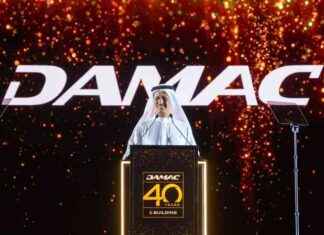This article is adapted from the business magazine Capital and is available here for ten days. Afterwards it will only be available to read at www.capital.de. Like stern, Capital belongs to RTL Deutschland.
Germany is becoming more inventive again: German inventors registered almost 25,000 patents with the European Patent Office (EPO) in 2023, as a new report from the organization shows. This means that German registration numbers rose again for the first time in three years. The Federal Republic therefore holds the top position in the ranking of European countries.
In a global comparison, most of the innovations submitted – 48,155 – came from the USA. That’s 24 percent of all inventions registered for patents at the EPO. Germany ranks second in the world. Behind them are Japan and China. This time the Republic of Korea also made it into the top five countries. Compared to the previous year, companies from the East Asian country submitted 21 percent more innovations to the EPO.
In total, the European Patent Office registered 199,275 patent applications last year – the highest number since the Munich-based office was founded in 1977. However, this is not an EU authority, but a supranational organization to which 39 European states belong. The EPO is financed entirely from the fees that patent applicants have to pay. These also benefit the 39 member states proportionately.
Last summer, numerous large companies, including Bayer, Ericsson, Nokia and Procter, criticized the fact that more patent applications are not necessarily a good thing
According to the European Patent Office, patent applications serve as an early indicator of which research and development areas companies are investing in. The European Patent Office most frequently examined inventions in the areas of digital communication, medical technology and computer technology. For the third time in a row, the leading applicant for European patents was the Chinese telecommunications supplier Huawei. With just over 5,000 submissions, this company accounted for almost a quarter of all patent applications from China.
The South Korean companies LG and Samsung, the US semiconductor manufacturer Qualcomm and the Swedish-based telecom equipment supplier Ericsson also landed in the top five most active patent applicants.
Companies from Germany most often submitted innovations to the EPO in the areas of electrical machines and devices as well as electrical energy. 2,154 registrations were made in this sector, which also includes inventions in battery technology.
In the traditionally patent-intensive transport sector, Germany developed inventions in 1905 and thereby defended its leading position in the field of transport and vehicle technology: More than 20 percent of all European patent applications that the examiners received in this segment last year came from the Federal Republic. With 1,579 registrations, German companies were also very inventive in measurement technology, which includes sensors that are urgently needed for the digitalization of industry. Only US companies had more patents examined in this area than German companies.
German technology trends include the areas of computer technology and biotechnology. In these promising sectors, German inventors and companies increasingly filed patents with the EPO: the number of patents applied for in these technological fields increased by just over 13 percent.
The most patent-active German companies included Siemens AG (1889 patent applications), BASF (1445) and Robert Bosch (1187). Measured by the number of innovations submitted, German companies often took top positions in their technology fields, such as Braun AG in medical technology, Evonik and Bayer in the field of organic fine chemicals, and Continental and the technology group ZF in the transport sector.
This year’s Patent Index from the European Patent Office also contains, for the first time, statistics on how much women contribute to technical innovations. The data shows that female inventiveness needs to be further promoted in Germany. In patent applications from Germany, a woman was listed as the inventor in only 22 percent of cases. This puts Germany well below the average of all 39 EPA member states of 27 percent. Across Europe, most female inventors were involved in innovations in chemistry (50 percent), but the least frequently were in the field of mechanical engineering (14 percent).












